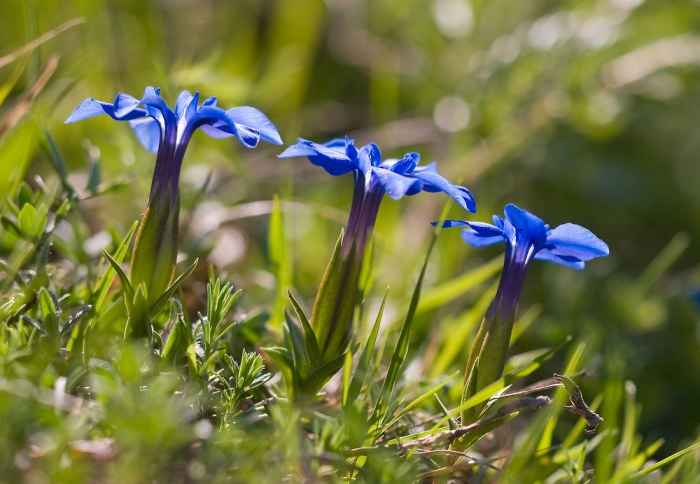Spring Gentian
(Gentiana verna)
Spring Gentian (Gentiana verna)
/
/

Thierry Arbault
CC BY 4.0
Image By:
Thierry Arbault
Recorded By:
Copyright:
CC BY 4.0
Copyright Notice:
Photo by: Thierry Arbault | License Type: CC BY 4.0 | License URL: http://creativecommons.org/licenses/by/4.0/ | Rights Holder: Thierry Arbault | Publisher: iNaturalist | Date Created: 2009-05-28T00:00-07:00 |























Estimated Native Range
Summary
Gentiana verna, commonly known as Spring Gentian, is a perennial herb native to alpine and subalpine meadows in Eurasia. It is a low-growing plant, typically reaching only a few centimeters in height, with a rosette of lance-shaped leaves. The Spring Gentian is renowned for its intense azure blue flowers, which are among the most striking of alpine plants and bloom from late spring to early summer. The flowers are funnel-shaped, up to 3 cm across, and are highly attractive to pollinators such as butterflies and bees.
In cultivation, Spring Gentian is valued for its vibrant blue flowers and its ability to thrive in rock gardens and alpine troughs, where it can emulate its natural mountainous habitat. It prefers well-drained, neutral to alkaline soils, often with a chalky or limestone component, and requires full sun to partial shade. While it is relatively low maintenance, it does not tolerate wet or waterlogged soils, especially in winter. Due to its small size and showy flowers, it is often used in rockeries, as edging for paths, or in container plantings. Gardeners should be aware that Gentiana verna is considered endangered in some regions and should be sourced responsibly.CC BY-SA 4.0
In cultivation, Spring Gentian is valued for its vibrant blue flowers and its ability to thrive in rock gardens and alpine troughs, where it can emulate its natural mountainous habitat. It prefers well-drained, neutral to alkaline soils, often with a chalky or limestone component, and requires full sun to partial shade. While it is relatively low maintenance, it does not tolerate wet or waterlogged soils, especially in winter. Due to its small size and showy flowers, it is often used in rockeries, as edging for paths, or in container plantings. Gardeners should be aware that Gentiana verna is considered endangered in some regions and should be sourced responsibly.CC BY-SA 4.0
Plant Description
- Plant Type: Herb
- Height: 0.25-0.5 feet
- Width: 0.5-1 feet
- Growth Rate: Slow
- Flower Color: Blue
- Flowering Season: Spring
- Leaf Retention: Evergreen
Growth Requirements
- Sun: Full Sun, Part Shade
- Water: Medium
- Drainage: Fast, Medium
Common Uses
Bee Garden, Border Plant, Groundcover, Low Maintenance, Rock Garden
Natural Habitat
native to alpine and subalpine meadows in Eurasia
Other Names
Common Names: Vernal Gentian
Scientific Names: , Gentiana verna, Blackstonia pontica, Blackstonia uniflora, Blackstonia verna, Ericala aestiva, Ericala angulosa, Ericala verna, Gentiana acaulis, Gentiana prostrata
GBIF Accepted Name: